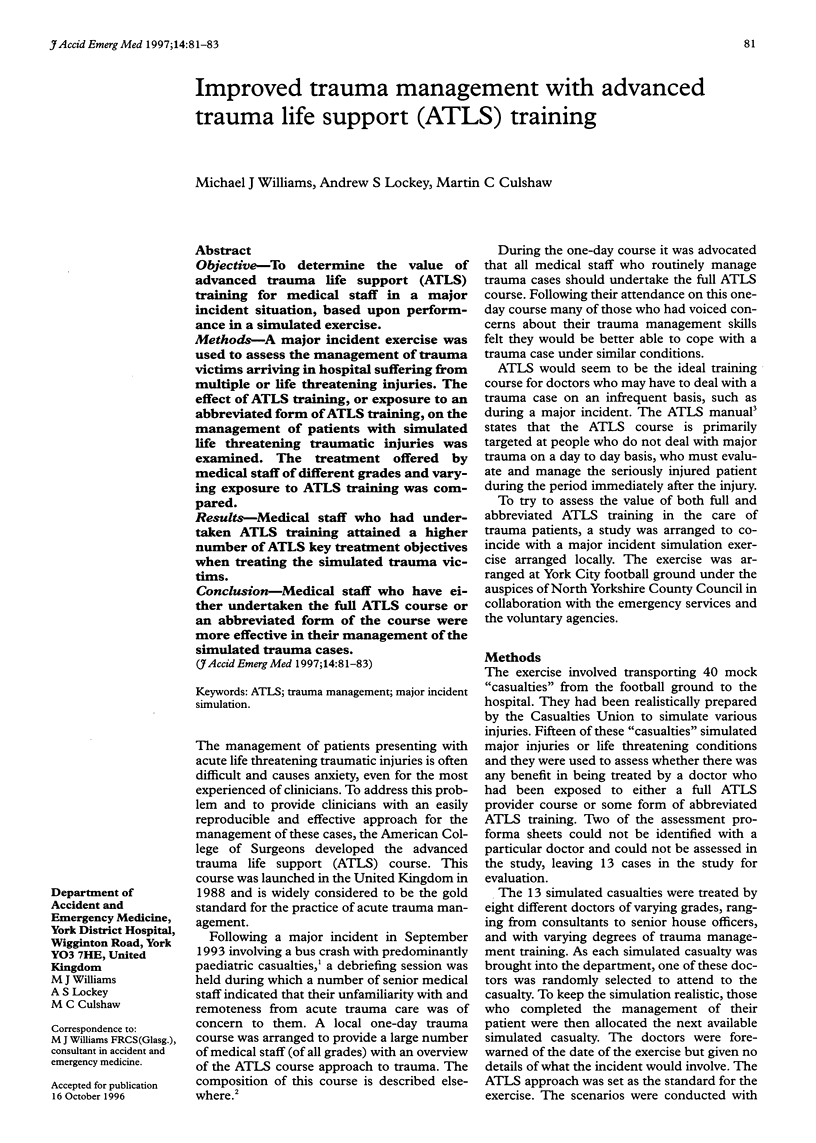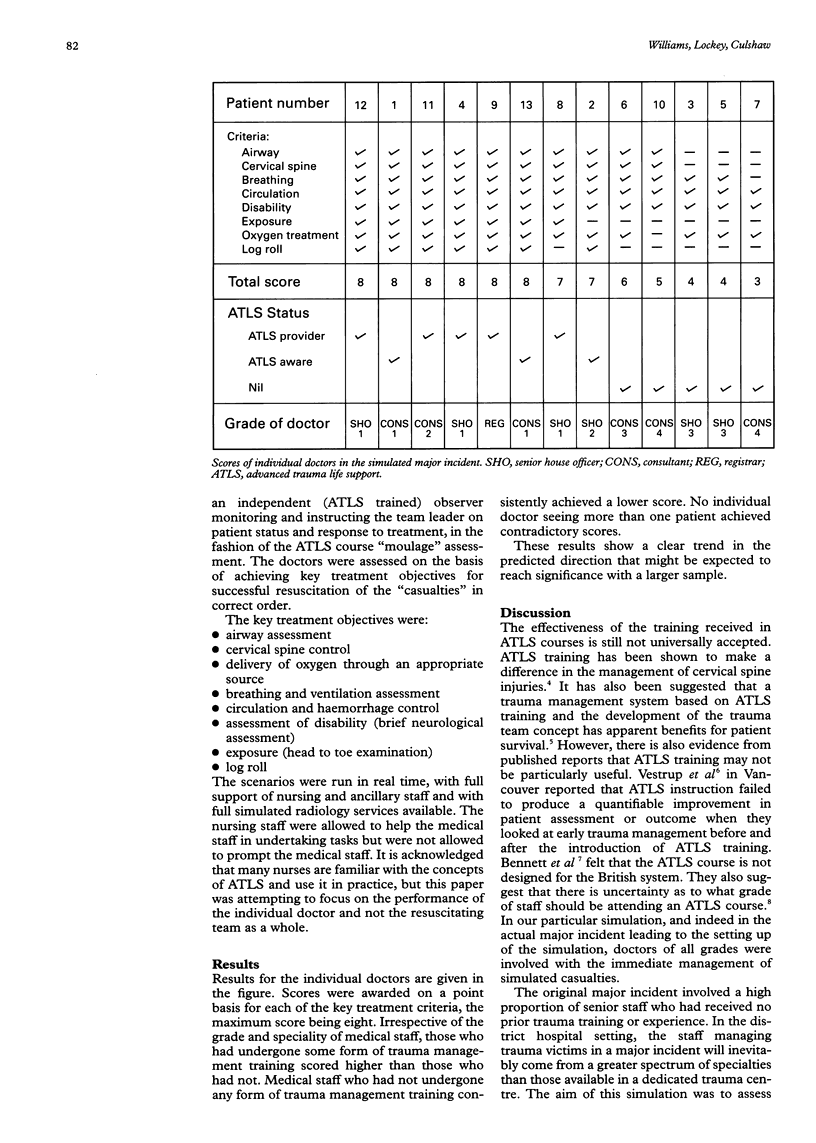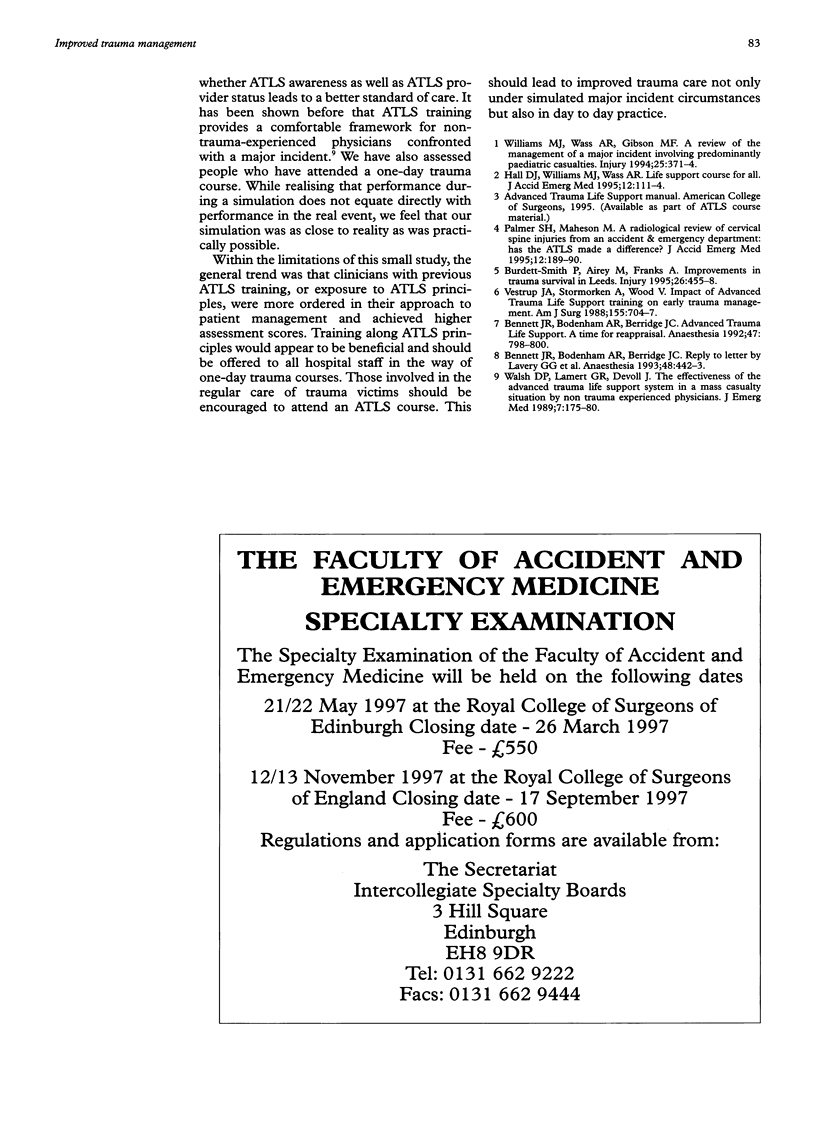Abstract
OBJECTIVE: To determine the value of advanced trauma life support (ATLS) training for medical staff in a major incident situation, based upon performance in a simulated exercise. METHODS: A major incident exercise was used to assess the management of trauma victims arriving in hospital suffering from multiple or life threatening injuries. The effect of ATLS training, or exposure to an abbreviated form of ATLS training, on the management of patients with simulated life threatening traumatic injuries was examined. The treatment offered by medical staff of different grades and varying exposure to ATLS training was compared. RESULTS: Medical staff who had undertaken ATLS training attained a higher number of ATLS key treatment objectives when treating the simulated trauma victims. CONCLUSION: Medical staff who have either undertaken the full ATLS course or an abbreviated form of the course were more effective in their management of the simulated trauma cases.
Full text
PDF


Selected References
These references are in PubMed. This may not be the complete list of references from this article.
- Bennett J. R., Bodenham A. R., Berridge J. C. Advanced trauma life support. A time for reappraisal. Anaesthesia. 1992 Sep;47(9):798–800. doi: 10.1111/j.1365-2044.1992.tb03260.x. [DOI] [PubMed] [Google Scholar]
- Burdett-Smith P., Airey M., Franks A. Improvements in trauma survival in Leeds. Injury. 1995 Sep;26(7):455–458. doi: 10.1016/0020-1383(95)00059-i. [DOI] [PubMed] [Google Scholar]
- Hall D. J., Williams M. J., Wass A. R. Life support courses for all. J Accid Emerg Med. 1995 Jun;12(2):111–114. doi: 10.1136/emj.12.2.111. [DOI] [PMC free article] [PubMed] [Google Scholar]
- Lavery G. G., Johnston H. M., Rowlands B. J. Advanced trauma life support. Anaesthesia. 1993 May;48(5):442–443. doi: 10.1111/j.1365-2044.1993.tb07027.x. [DOI] [PubMed] [Google Scholar]
- Palmer S. H., Maheson M. A radiological review of cervical spine injuries from an accident and emergency department: has the ATLS made a difference? J Accid Emerg Med. 1995 Sep;12(3):189–190. doi: 10.1136/emj.12.3.189. [DOI] [PMC free article] [PubMed] [Google Scholar]
- Vestrup J. A., Stormorken A., Wood V. Impact of advanced trauma life support training on early trauma management. Am J Surg. 1988 May;155(5):704–707. doi: 10.1016/s0002-9610(88)80150-8. [DOI] [PubMed] [Google Scholar]
- Walsh D. P., Lammert G. R., Devoll J. The effectiveness of the advanced trauma life support system in a mass casualty situation by non-trauma-experienced physicians: Grenada 1983. J Emerg Med. 1989 Mar-Apr;7(2):175–180. doi: 10.1016/0736-4679(89)90266-7. [DOI] [PubMed] [Google Scholar]
- Wass A. R., Williams M. J., Gibson M. F. A review of the management of a major incident involving predominantly paediatric casualties. Injury. 1994 Aug;25(6):371–374. doi: 10.1016/0020-1383(94)90128-7. [DOI] [PubMed] [Google Scholar]


